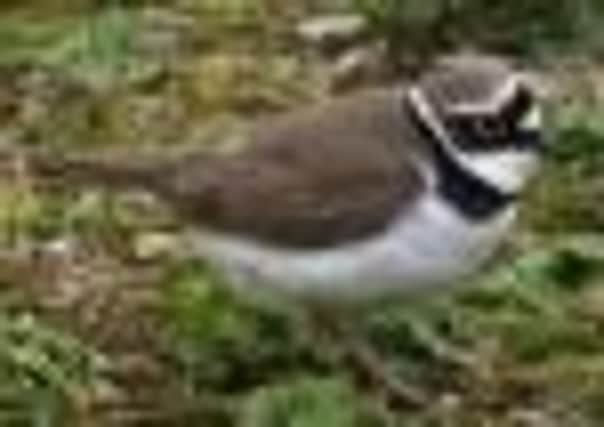Birdwatch: Plover lovers can spot the difference


This was once a rare vagrant here but, after the first pair bred on a dried-out reservoir at Tring in Hertfordshire in 1938, numbers increased steadily to around 1,000 pairs now. They were helped by the post-Second World War building boom which provided large numbers of gravel pits to nest around.
They are attractive birds, sandy brown above and white below and with a black mask, white collar and black chest band. They are very like their slightly larger relative the ringed plover which occasionally breeds at inland sites although it is more a bird of estuary and sea coasts. Telling the two apart takes some care. The ringed plover has a distinctive white wing bar seen in flight while the little ringed has no bar or only a very faint one. Also ringed plovers have orange legs while the little ringed has pinky-brown legs and the little ringed has a bright yellow orbital ring around the eye.
Advertisement
Hide AdAdvertisement
Hide AdLittle ringed plovers lay up to four eggs in a shallow scrape, arranged in a circle with the points inwards and camouflaged so that both eggs and birds are very hard to see among the pebbles.
As well as gravel pits, little ringed plovers have also started to nest along shingle river banks in Wales while they have also been nesting in crops such as sugar beet and linseed which mature later in the year giving the chicks time to reach maturity.
Wheatears have started to be seen in the region with the Spurn Bird Observatory seeing their first two of the year last Friday. A rare vagrant, a male white-spotted bluethroat, was present this week in a ditch near Southfield Farm this week. The red-spotted form of bluethroat breeds in Scandinavia while the white spotted form is found in the rest of Europe and one or two pairs bred on Thorne Moors, South Yorkshire for two or three years in the 1990s.
Black redstarts were seen at Spurn and Beacon Lane, Kilnsea. Ospreys on their way back to Scottish breeding sites have been seen at Tophill Low, Green Withens reservoir, South Yorkshire and Wheldrake Ings while three common cranes called in to Bubwith Ings and North Duffield Carrs.
Advertisement
Hide AdAdvertisement
Hide AdA great grey shrike was seen from the Geoff Smith hide at North Duffield while possibly the same bird was seen at Skipwith Common.
Avocets are being seen at more inland sites with six at the North Cave wetland, East Yorkshire and three at Swillington Ings, Leeds. A special avocet-themed day is being held at the RSPB’s Blacktoft Sands reserve near Goole from 11am to 4pm on Sunday, April 3. There will be a charge of £3 for non-RSPB members.
Large groups of whooper swans have been on the move back to breeding sites in Iceland with 52 seen over Sheffield, 54 at North Duffield Carrs, 45 at Scaling Dam reservoir, Cleveland and 11 at Fairburn Ings. There have also been more pink-footed geese on the move with 500 seen over Flamborough.
Redhead smews were at Tophill Low and Allerton Bywater near Leeds while a drake green-winged teal continues to be seen on a lake at Newburgh Priory.
Advertisement
Hide AdAdvertisement
Hide AdBlack-tailed godwits are also being seen on passage to breeding sites, with 25 at Blacktoft Sands, while there was an unusual inland sighting of three bar-tailed godwits at the Potteric Carr reserve near Doncaster. Flocks of redwings are gathering with some starting to sing in the warm sunshine this week.